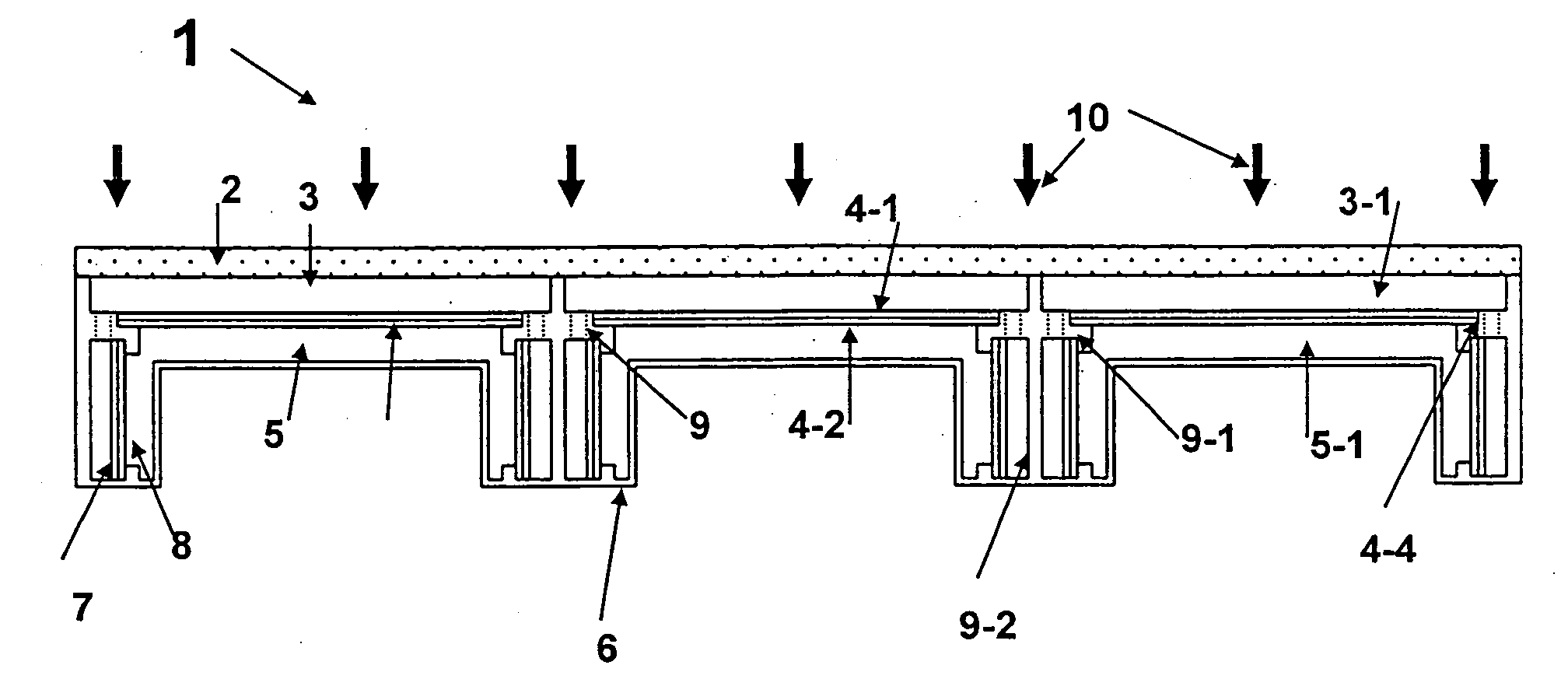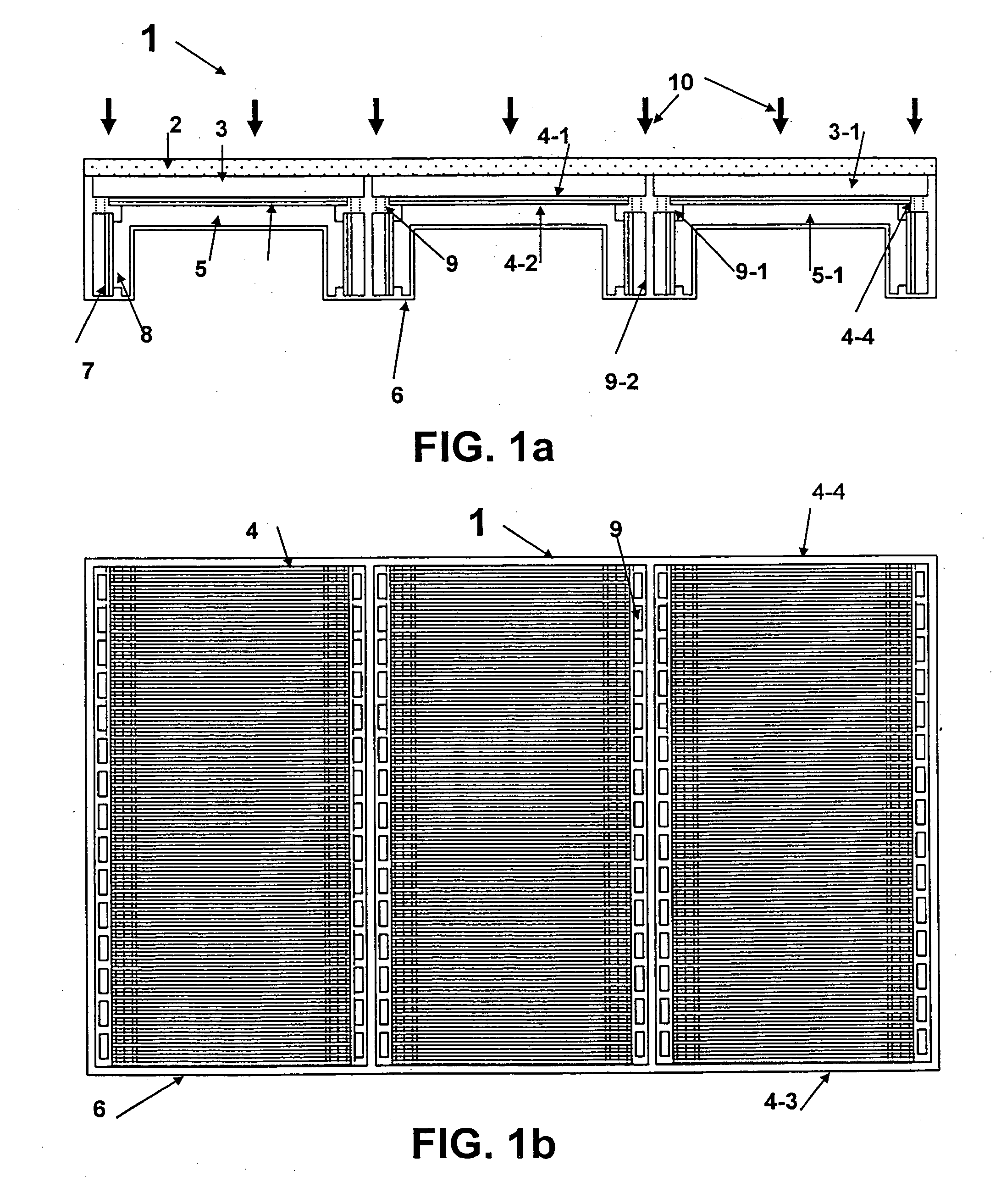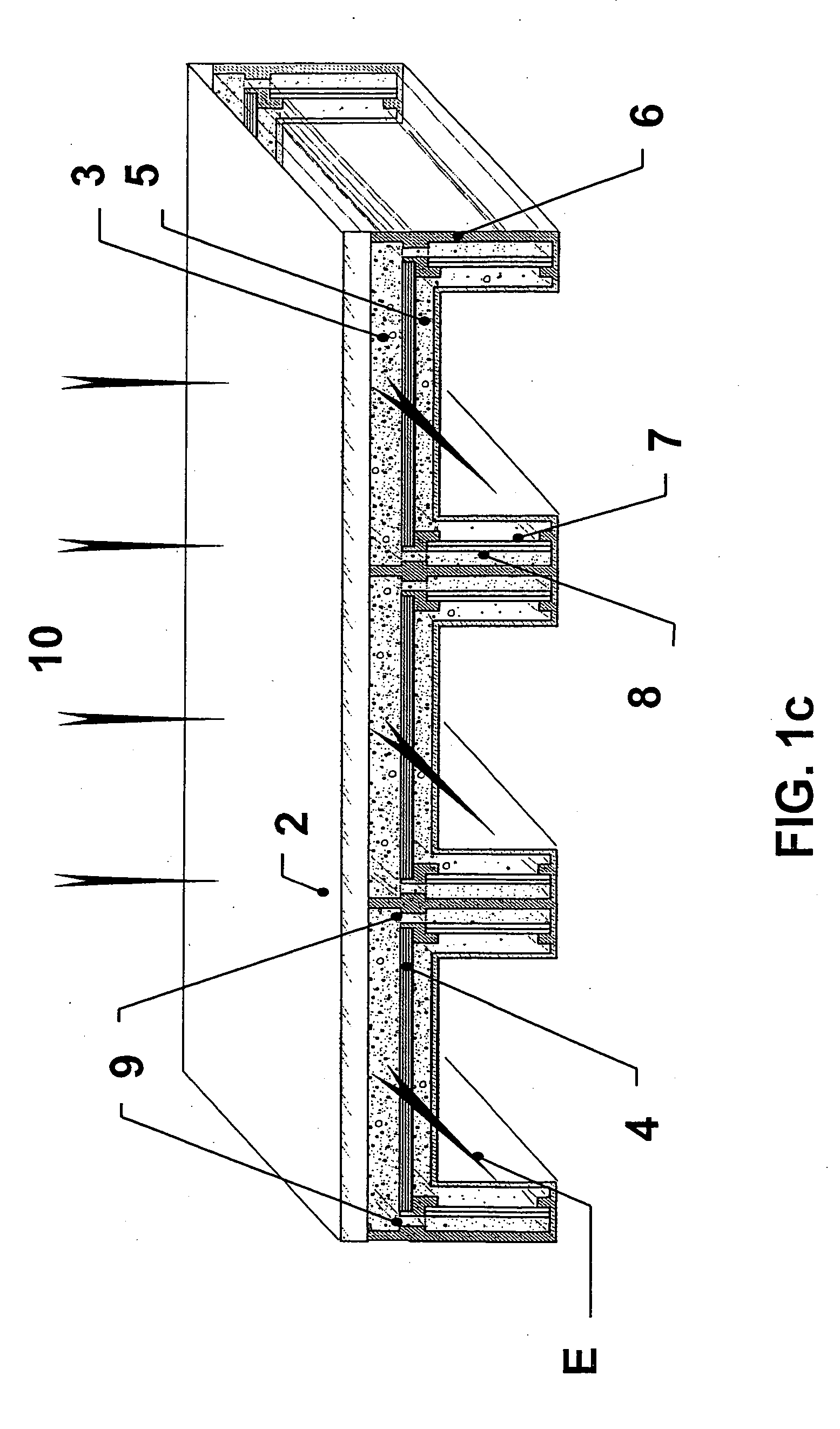Integrated photoelectrochemical cell and system having a liquid electrolyte
a photoelectrochemical cell and liquid electrolyte technology, applied in the field of hydrogen and oxygen generation, can solve the problem of approximately 1.6v or greater voltage, and achieve the effect of reducing the cost of the pec cell and increasing the efficiency of the hydrogen and oxygen production
- Summary
- Abstract
- Description
- Claims
- Application Information
AI Technical Summary
Benefits of technology
Problems solved by technology
Method used
Image
Examples
examples
[0074] The photoelectrode can be made using different types of solar cells. Both two-junction and three-junction a-Si based solar cells can be used, for example.
[0075] When a two-junction a-Si / a-SiGe solar cell is used, the total voltage can be made to be around 1.6V or higher at operating point, when relative low Ge content is used for the absorber layers. In one embodiment, a specific structure comprises: [0076] stainless steel / aluminum / ZnO / a-Si n / a-SiGe intrinsic / a-Si p or nanocrystalline p / a-Si n / a-Si intrinsic / a-Si p or nanocrystalline p / SnO2:F.
[0077] The thickness of the respective layers, are approximately: 0.1 mm / 100 nm / 500 nm / 10 nm / 150 nm / 10 nm / 10 nm / 150 nm / 10 nm / 200 nm, respectively, for optimum sunlight radiation.
[0078] The width of each sections of photoelectrode 4 is around 5 to 10 cm while the length can be in the order of 1 m. The optimum width of electrode is determined by the effective ion conduction, the largest active area of electrode under the sunlight, and l...
PUM
| Property | Measurement | Unit |
|---|---|---|
| water-splitting voltage | aaaaa | aaaaa |
| voltage | aaaaa | aaaaa |
| total voltage | aaaaa | aaaaa |
Abstract
Description
Claims
Application Information
 Login to View More
Login to View More - R&D
- Intellectual Property
- Life Sciences
- Materials
- Tech Scout
- Unparalleled Data Quality
- Higher Quality Content
- 60% Fewer Hallucinations
Browse by: Latest US Patents, China's latest patents, Technical Efficacy Thesaurus, Application Domain, Technology Topic, Popular Technical Reports.
© 2025 PatSnap. All rights reserved.Legal|Privacy policy|Modern Slavery Act Transparency Statement|Sitemap|About US| Contact US: help@patsnap.com



